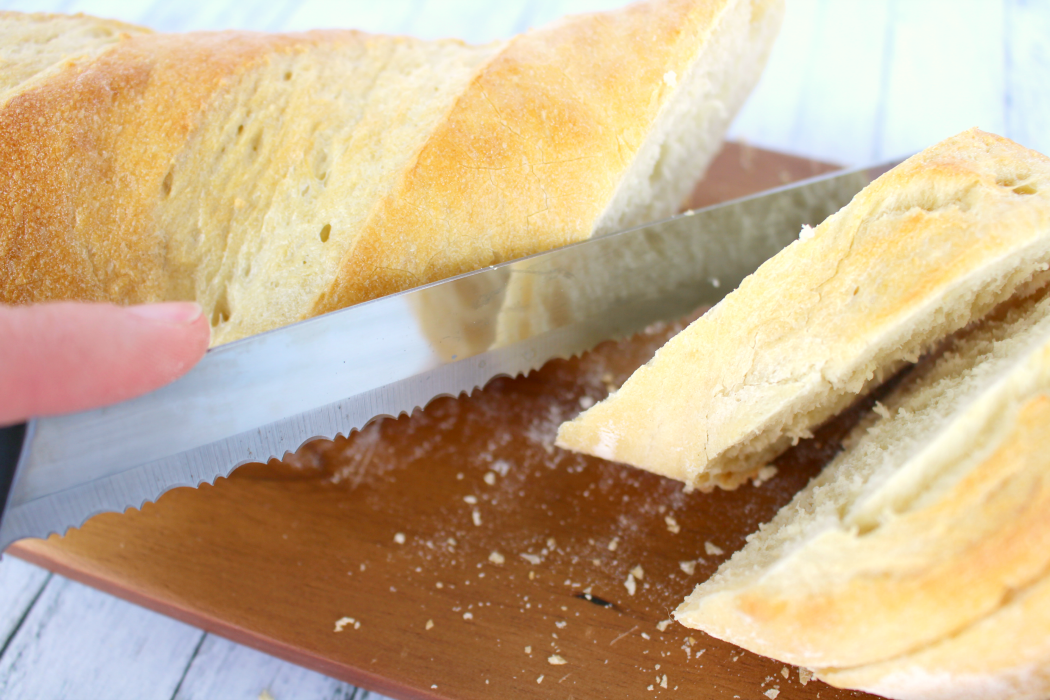
How to Choose A Knife
Choosing the right knife for all of your cooking and food prep needs.
Gone are the days of purchasing a big set of knives only to discover that you use just a few. Today, knife and cutlery options are just as numerous as the foods we cook with, so you can pick the ones that work best for you. Knives come in multiple sizes and are made of a variety of materials. When choosing a good one, you need to consider what you’ll be using it for, which size you prefer, and how it feels in your hands. Ultimately, your decision when choosing between knives should be based on the task being performed. Here are 5 different knives and their most common uses for food prep.
1 Paring Knife
A paring knife will likely be one of the smallest in your collection. Typically, paring knives range from 3 to 5 inches in length and have either a straight or serrated blade. Paring knives are ideal for slicing, chopping, and peeling or mincing small, delicate fruits, vegetables and herbs.

A paring knife is best for: berries, garlic, figs, apples, pears, peaches and leafy herbs like mint, basil and oregano.
2 Medium Serrated Utility Knife
A serrated utility knife is often considered one of the most useful knives in the kitchen. Used for a variety of foods, it will cut through delicate tomatoes with ease, slice a sandwich, or cut a frosted cake. Blades tend to be around 5 to 6 inches long. Choose a utility knife that feels good in your hands—not too heavy, and with a well-crafted handle and grip.

A serrated utility knife is best for: tomatoes, mangoes, cubing or slicing cooked meats, asparagus, bell peppers, sandwiches, buns and rolls, cakes, pies and desserts.
3 Serrated Bread Knife
If you’re a baker you should definitely have a serrated bread knife in your collection. One of the larger knives, these serrated blades typically vary in length from 8 to 10 inches and are ideal for cutting and slicing through tough bread crusts without crushing the loaf.

A serrated utility knife is best for: loaves of fresh bread, baguettes, bagels, and sandwich rolls, and freshly baked cakes. Large Serrated knives can also be used for large pork or beef roasts and are great for slicing a roasted turkey.
4 Santoku Knife
For many, the Santoku knife has taken the place of the classic chef’s knife for its ease of control and scaled down size. With its moderately sized blade, a Santoku knife varies in length from 5 to 8 inches and is ideal for those with slightly larger hands. Many consider the Santoku knife their go-to all-purpose knife.

A Santoku knife is best for: chopping and mincing onions, shallots, garlic, fine or woody herbs like rosemary, thyme, basil, oregano, parsley, mint and cilantro. Great for cubing meats like ham, salami and cooked poultry. This knife also does well with chopping hard chocolates, barks, and candies, and works well with most frozen foods.
5 Cleaver
For many cooks, a good cleaver is their chopping, dicing and mincing champion! The cleaver’s slender design is ideal for chopping and scooping food into your salad, soup or sautee pan. With blades typically varying from 7 to 8 inches in length, this knife is great for those who want an all-purpose tool that can be used with a wide variety of foods.

A cleaver is best for: onions, shallots, cabbage, lettuce, squash, potatoes, garlic, hard cheeses, chocolates and candies.
